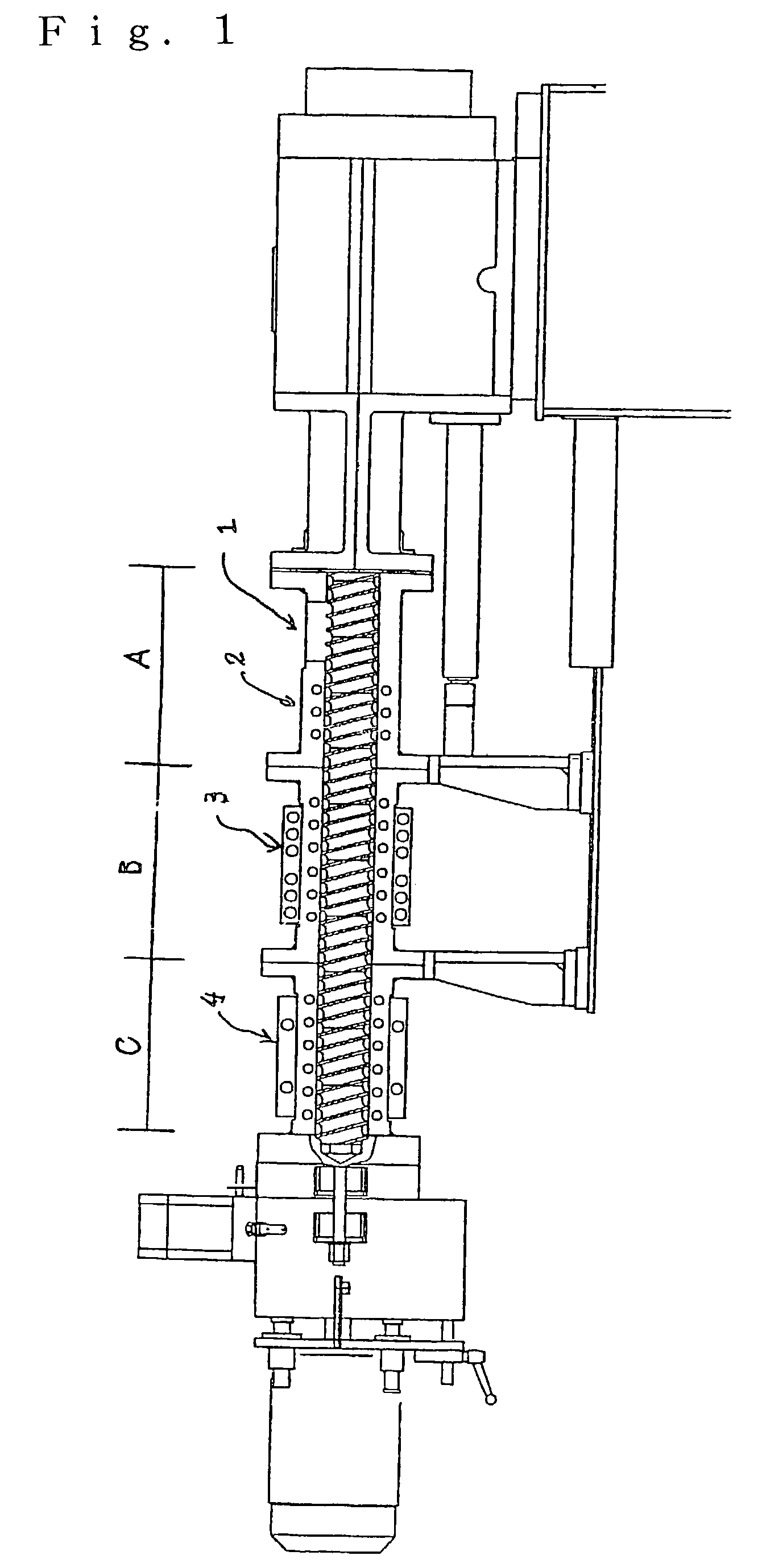Process for producing fatty acid salt and livestock feed containing the fatty acid salt
a technology livestock feed, which is applied in the field of producing fatty acid salt, can solve the problems of poor uniformity of products thereof, reduced production per batch, and high production cost disadvantage, and achieves low melting temperature, high efficiency, and effective production of fatty acid salt
- Summary
- Abstract
- Description
- Claims
- Application Information
AI Technical Summary
Benefits of technology
Problems solved by technology
Method used
Image
Examples
example 1
[0031]Soybean oil fatty acid (melting temperature: −2° C.) that had been heated to 40° C. in advance and calcium hydroxide were supplied to a No. 1 barrel of an extruder (model EA-100; manufactured by Suehiro EPM Corporation) through a stock inlet thereof, at rates of 100 kg / h and 20 kg / h, respectively. Water was supplied through a water inlet provided in the upper section of the No. 1 barrel at a rate of 3 kg / h. The temperature of the jackets for No. 1 and No. 2 barrels (stock supply zone) was preset at 70° C., that for No. 3 and No. 4 barrels (kneading / reaction zone) was preset at 180° C., and that for No. 5 and No. 6 barrels (cooling zone) was preset at −10° C., and reaction was allowed to proceed continuously for 5 hours at a screw speed of 120 rpm. After completion of reaction, a fatty acid calcium product having a percent reaction, yield, and percent yield shown in Table 1 was obtained. The number of days required for the process and the amount of production are also shown in ...
example 2
[0032]The general procedure of Example 1 was repeated, except that the following changes were made: Soybean oil fatty acid was replaced by corn oil fatty acid (melting temperature: −10° C.); calcium hydroxide (20 kg / h) was replaced by nickel hydroxide (25 kg / h); the temperature of the jackets for No. 3 and No. 4 barrels (kneading / reaction zone) was changed from 180° C. to 150° C.; and the temperature of the jackets for No. 5 and No. 6 barrels (cooling zone) was changed from −10° C. to −5° C. After completion of reaction, a fatty acid nickel product having a percent reaction, yield, and percent yield shown in Table 1 was obtained. The number of days required for the process and the amount of production are also shown in Table 1.
example 3
[0033]The general procedure of Example 1 was repeated, except that the following changes were made: Soybean oil fatty acid was replaced by eicosapentaenoic acid (melting temperature: −44° C., product of NOF Corporation); calcium hydroxide (20 kg / h) was replaced by magnesium hydroxide (16 kg / h); and the screw speed was changed from 120 rpm to 100 rpm. After completion of reaction, a fatty acid magnesium product having a percent reaction, yield, and percent yield shown in Table 1 was obtained. The number of days required for the process and the amount of production are also shown in Table 1.
PUM
| Property | Measurement | Unit |
|---|---|---|
| melting temperature | aaaaa | aaaaa |
| temperature | aaaaa | aaaaa |
| temperature | aaaaa | aaaaa |
Abstract
Description
Claims
Application Information
 Login to View More
Login to View More - R&D
- Intellectual Property
- Life Sciences
- Materials
- Tech Scout
- Unparalleled Data Quality
- Higher Quality Content
- 60% Fewer Hallucinations
Browse by: Latest US Patents, China's latest patents, Technical Efficacy Thesaurus, Application Domain, Technology Topic, Popular Technical Reports.
© 2025 PatSnap. All rights reserved.Legal|Privacy policy|Modern Slavery Act Transparency Statement|Sitemap|About US| Contact US: help@patsnap.com

